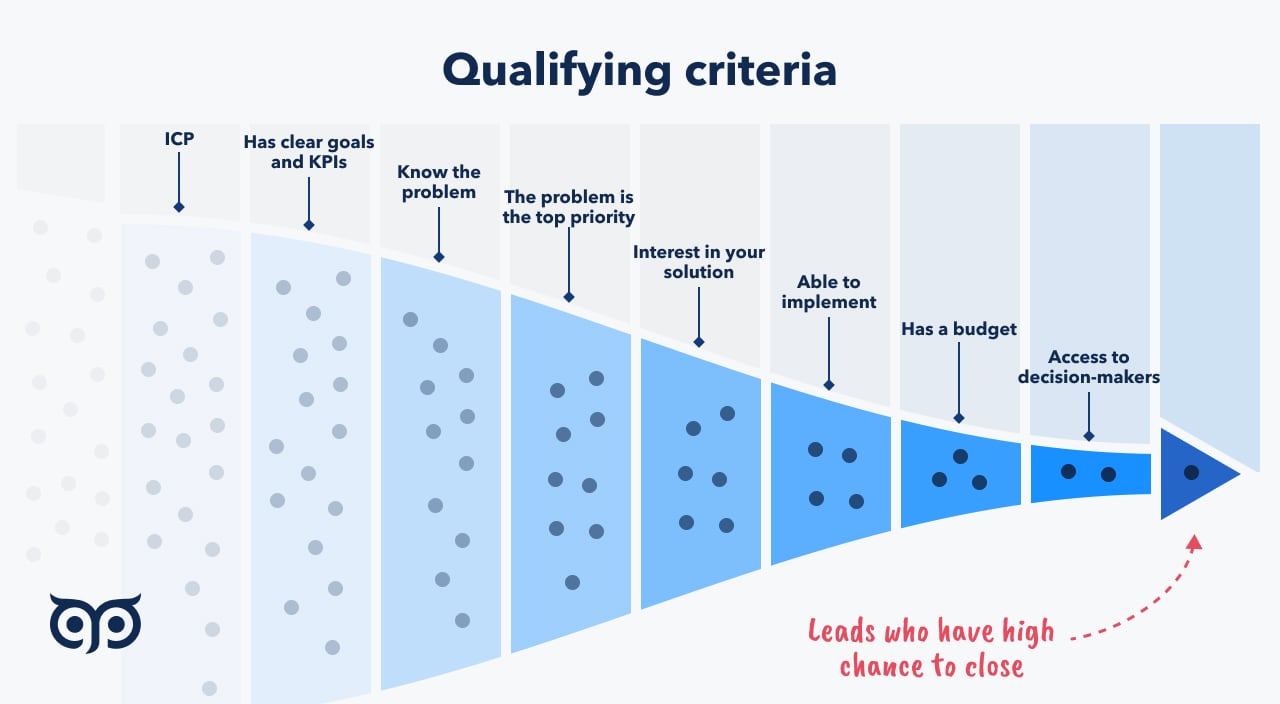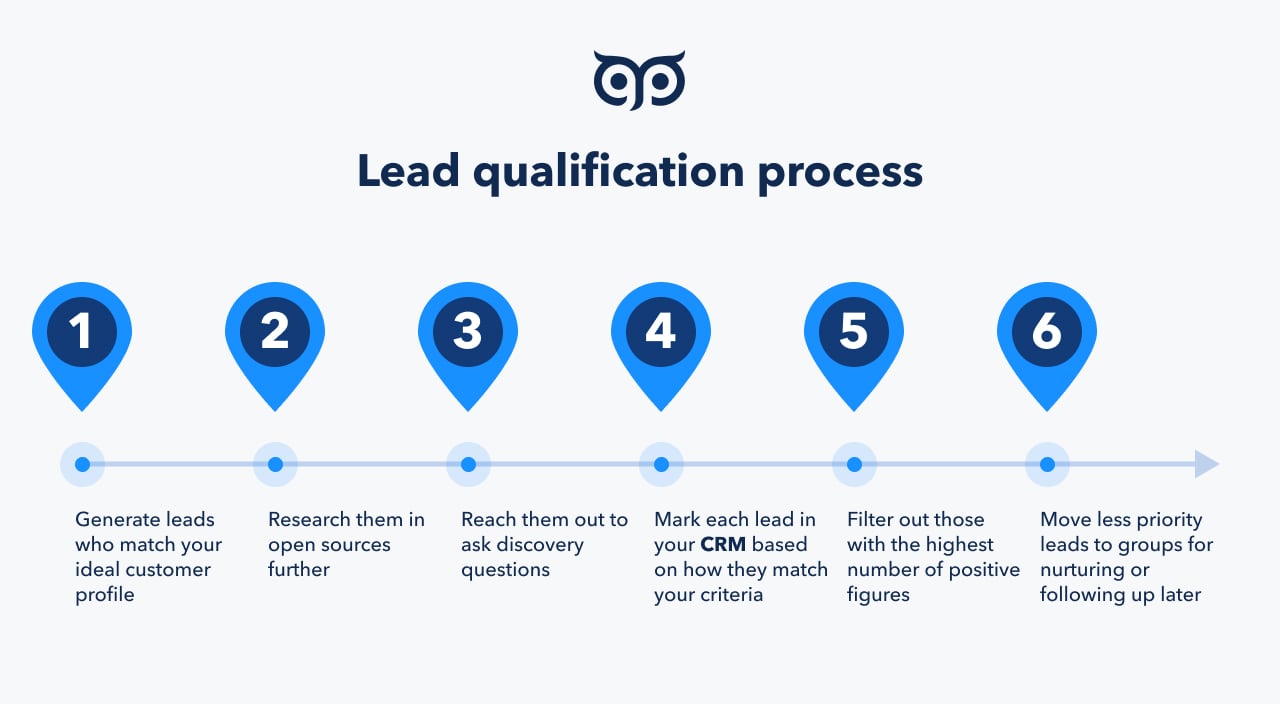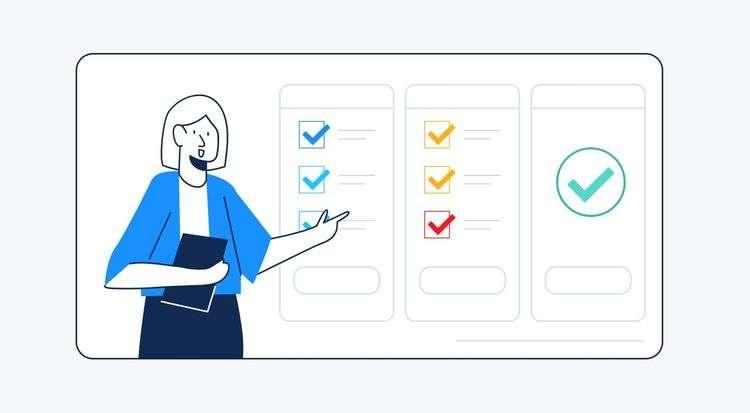To cut more deals, it is wiser to focus on the metric: the percentage of high-priority clients you booked. To accomplish it, we need sales lead qualification.
Regardless of how you find possible clients, you require to pick over people who have a high chance to close (before any further communication, demos, and other efforts). So you can speak to highly prospective ones quickly.
Yet the majority of businesses don’t follow the tactic. Verse research states that only 39% of companies employ lead qualification in the selling processes. It results in only 33% of salespeople and marketers being somewhat satisfied with their closing ratio, with 21% somewhat unsatisfied.
Irrespective you are new to qualifying leads meaning or already have a system in place and looking for ways of improvement, we are here to guide you.
What is lead qualification?
Lead qualification meaning is the technique that assists in prioritizing potential clients and allocating working time smartly. As a result, you cut more deals, and ROI increases. In a selling cycle, lead qualification comes after lead generation.
Lead qualification checklist:
-
the lead fits your ICP
-
they have a strong intent to buy
-
and a strong probability of being a successful long-term client
Lead scoring and lead qualification definition are sometimes used interchangeably. For instance, for outbound channels.
In cases where the notions are used separately, lead scoring means inbound lead qualification. The concept refers to marketing activities and involves prioritizing qualified leads according to their attributes and behaviors. As such, job title, company size, website visits, e-book downloads, email opens, and CTA clicks. For each attribute or behavior, a prospect receives a certain number of points. Leads that get the highest score should be processed first.
Each criterion has its value. Based on the data, the activities and attributes indicate a high probability of a purchase.
B2B lead qualification benefits
-
Shortened sales cycle since from the very start you choose those who close faster.
-
↑ closed deals => ↑ ROI from your lead generation efforts.
-
The number of missed potential buyers will dramatically decrease. While you are involved with low-qualified leads, hot prospects may just move with your competitor.
-
Stronger relationships with customers. By allocating most of the working time to the top-priority prospects, you provide a higher quality experience.
Identify right lead qualification criteria

Qualifying criteria include signals indicating strong intent to buy. So choosing characteristics keep in mind relevance to the sales workflow. Age, the number of children, marital status rarely uncover if the lead will buy and how in B2B.
You can divide lead qualification criteria into 2 blocks. They illustrate stages of lead qualification. During lead generation, you are guided by ICP. So you choose more relevant leads at the stage and dedicate your time to them instead of all you can gather. Then, from the resulting list, you choose more qualified based on their answers:
-
The info you can get on your own and with the help of lead generation and intelligence tools. It includes attributes of your ICP and buyer persona. Size, location, vertical, as well as company-specific criteria such as business model, SDK used, hiring speed, etc. Check out our previous blog posts for a full guide on how to create and implement a working ICP and a buyer persona.
-
The details that you will try to figure out directly from the prospect (through emails, messages, calls, meetings). Here we offer some general criteria to refine for your sales lead qualification process.
-
The problem is among their top priorities. They are going to fix it shortly.
-
They are aware of the challenge and can articulate their pains about it.
-
They have at least the minimum budget you can work with. If they have been already using your competitors or other alternatives it will be easier to figure this out.
-
You have or will have (there are powerful grounds) access to key decision-makers.
-
Their decision-making procedure aligns with your sales cycle. You know the average buying team and procedure from your Buyer persona, though you need to clarify the point with each potential client.
-
They can implement your solution. It is about their tech, processes, talents, location, etc. So the time and efforts for integration match the gains.
-
Commitment. The product has already captured their interest.
-
The company and buyer have clear goals and strategies, measurable KPIs.
When you communicate with a potential buyer, you will interview them about their pains. To get the full benefit of your questions, build them as simple (specific) for your prospect and as insightful for you.
BAD: Who are your customers?
GOOD: Can you name your 5 last clients?
Sales lead qualification template

Irrespective of a complicated lead qualification system for an enterprise or a paper checklist for an early-stage startup, you should have a solid repeatable lead qualification process. Otherwise, the activity won’t land you hoped-for fruits.
Here's a sales lead qualification template of how you can organize the workflow.
-
In your CRM or just Google Sheet — create custom lead fields (qualifying criteria). You will put a yes/no (or other figures) in front of each prospect. Separate them into must-to-have and nice-to-have. Assign a corresponding value to each criteria.
-
Load your pipeline with leads that meet your ICP attributes. In some lead generation tools, you can save the attributes as a template. So you are freed up from filling them manually each time.
-
Take the resulting list and research further. Try to unearth as much information as you can. Hiring insights, investments and alternative investments, revenue, tech stack — everything that is relevant to the qualifiers. Dig into Cruchbase, Wikipedia, Reddit, sales Navigator, industry reports, etc.
-
Contact them for an interview to gather intel that you can't discover in open sources. Concentrate your attention on them and their challenges. Ask to uncover details. Don’t push with your services. You can only softly offer how you will relieve the pain.
-
During the research and reaching out, qualify a lead in sales and mark each prospect in the CRM based on how they meet your requirements. You will get a list of potential clients with yes/no, or other figures (number of employees, budget, etc.) in each qualifying criterion.
-
Summing up the criteria scores, you get the list of leads with the highest priority. Allocate most of your selling time to them.
-
If a lead doesn’t have all must-have characteristics (the basics for qualification), they go to a group for reaching back out in 6 months or are moved to marketing for educating and nurturing. For example, to send them a newsletter. You can pre-define several groups and what figures they should have.
At each stage, you can employ automation tools. Yet, according to Pipedrive, 39% of business owners who don't use technology for sourcing and picking over prospects just don't require it.
Whichever tool you choose, you need to customize it and can’t fully rely on the automated outcomes. And AI tools are only for those who have enough data to have the algorithm as accurate as possible.
Lead qualification stages: summary
- Meticulously define qualifying requirements. So they have something to do with the purchasing process and indicate the chance of closing/not closing a deal.
- Create a sales qualification system and make use of it consistently. Otherwise, the time you dedicate to building the system will be a waste of time.
- Update the system when you uncover additional details about your ICP, change the sales cycle, etc.
It is possible with a pre-saved template in lead generation tool like GetProspect
TryLead qualification - FAQ
What is a lead qualification in marketing?
A marketing lead qualification is uncovering if the lead can potentially buy, though they are not necessarily the best. The leads relate to TAM (total addressable market). While in sales, you look for the best potential buyers from the start.
How to qualify a lead as a prospect?
To qualify a lead as a prospect, typically, you see either the enthusiasm for your service, came from a referral, match your ICP, or they have all of the above attributes.
How to qualify a sales lead?
To qualify a sales lead, figure out if they fit your ICP, have a high probability of buying, and are expected to become a thriving long-term client.
Why is qualifying a lead important?
It is critical to qualify a lead so that you can find the greatest prospects as soon as possible. Otherwise, you miss leads who are ready to buy and dedicate your valuable time to low-priority leads.
What is a lead qualification framework?
A lead qualification framework is a standard model you leverage to figure out if the prospect has a high chance to convert into a profitable long-term client. The models usually are worked out from the common traits of closed leads.
What are the most common lead qualification methodologies?
The most common lead qualification methodologies are: ANUM, MEDDIC, CHAMP
-
ANUM (Authority, Need, Urgency, Money); The fact we are talking to the decision-maker is the first qualifier.
-
MEDDIC (Metrics, Economic Buyer, Decision Criteria, Decision Process, Identify Pain, Champion); Addresses the complexities of every organization's problem-solving procedures.
-
CHAMP (Challenges, Authority, Money, Prioritization). Focuses on the pain the target is ready to fix and whether it is the top priority problem.
What is the difference between lead generation and lead qualification?
Lead generation is a stage of the selling cycle when you source interested customers. They are not necessarily will become your customers. Lead qualification is the next step when you access how likely the found leads are to become your client.


